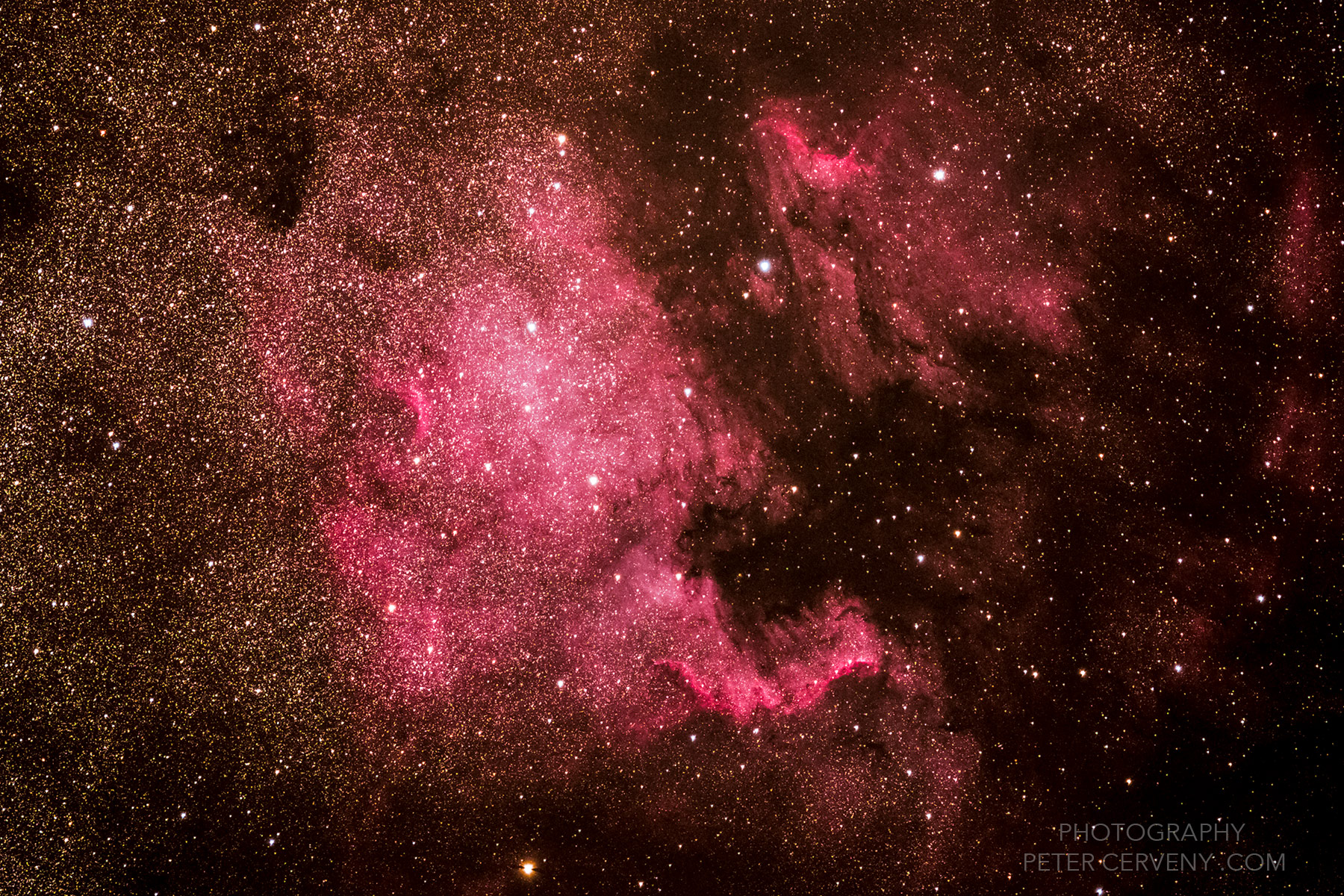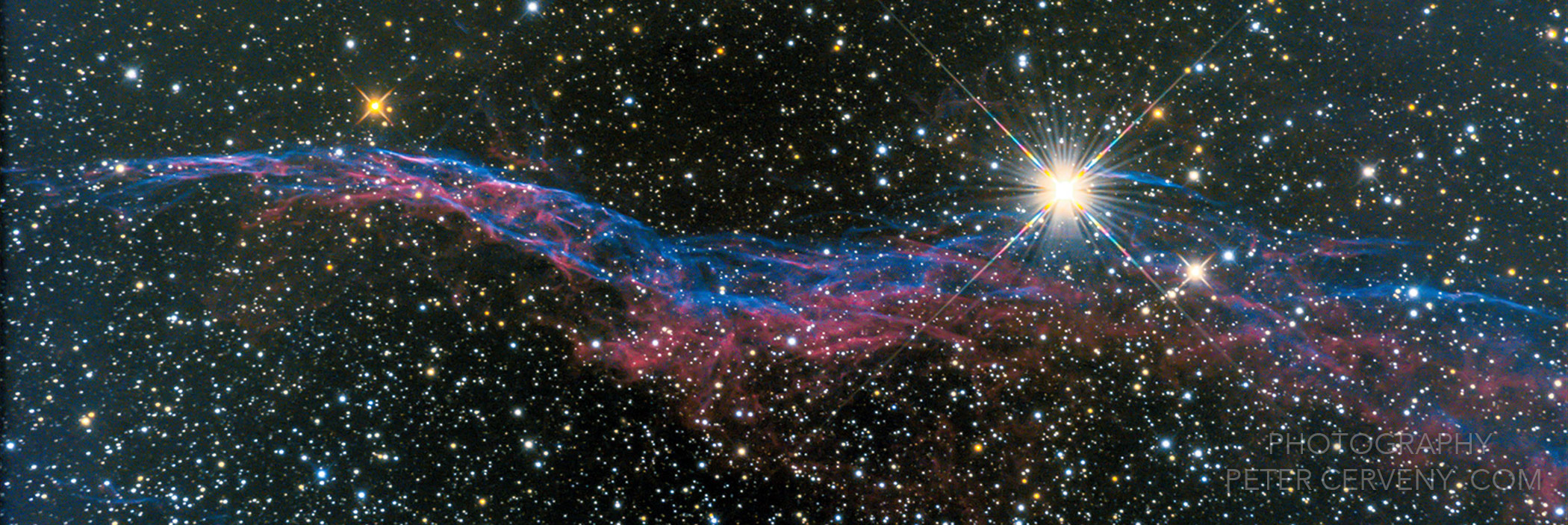
The North America Nebula (NGC 7000 or Caldwell 20) is an emission nebula in the constellation Cygnus, close to Deneb (the tail of the swan and its brightest star). The remarkable shape of the nebula resembles that of the continent of North America, complete with a prominent Gulf of Mexico.
The portion of the nebula resembling Mexico and Central America is known as the Cygnus Wall. This region exhibits the most concentrated star formation.
The North America Nebula and the nearby Pelican Nebula (IC 5070) are parts of the same interstellar cloud of ionized hydrogen (H II region). Between the Earth and the nebula complex lies a band of interstellar dust that absorbs the light of stars and nebulae behind it, and thereby determines the shape as we see it. The distance of the nebula complex is not precisely known, nor is the star responsible for ionizing the hydrogen so that it emits light. If the star inducing the ionization is Deneb, as some sources say, the nebula complex would be about 1,800 light-years distance, and its absolute size (6° apparent diameter on the sky) would be 100 light-years.
| Object | NGC7000 North America Nebula / IC5070 Pelican Nebula |
|---|---|
| Constellation: | Cygnus |
| Position: | RA 20h 59m 17.1s DEC +44° 31′ 44″ |
| Apparent Size: | 120 × 100 arcmin |
| Apparent Magnitude: | +4.0 |
| Distance (average) | 1600 ly |
| Photo Datas | |
| Date | 26.08.2016, 20:50 UTC |
| Location | Knottenried/Oberallgäu, 1002m ASL GPS: 47°36’13“ N, 10°11’24“ E |
| Sky darkness SQM-L | Zenit 20.7mag/sqrsec, Object 20.4mag/sqrsec |
| Ground Temp./Air Pressure | 13.5°C /1025mbar |
| Thermal sky temp./weather | -42°C Zenit |
| Seeing | |
| Telescope | Canon f/2.8 300mm IS I USM |
| Camera | Sony A7Ra mod @ T sensor=16.7°C |
| Expose frames | ISO 3200, RAW 10x30s, 4 darks |
| Total expose |
5 min |
| Filter | no |
| Mount | FS2 |
| Guiding Cam | no |
| Software | DSS 3.3.4, Photoshop CC |
| Remarks | My first astro photo with the modified cam (quick shot). |
C 2016 Peter Cerveny
